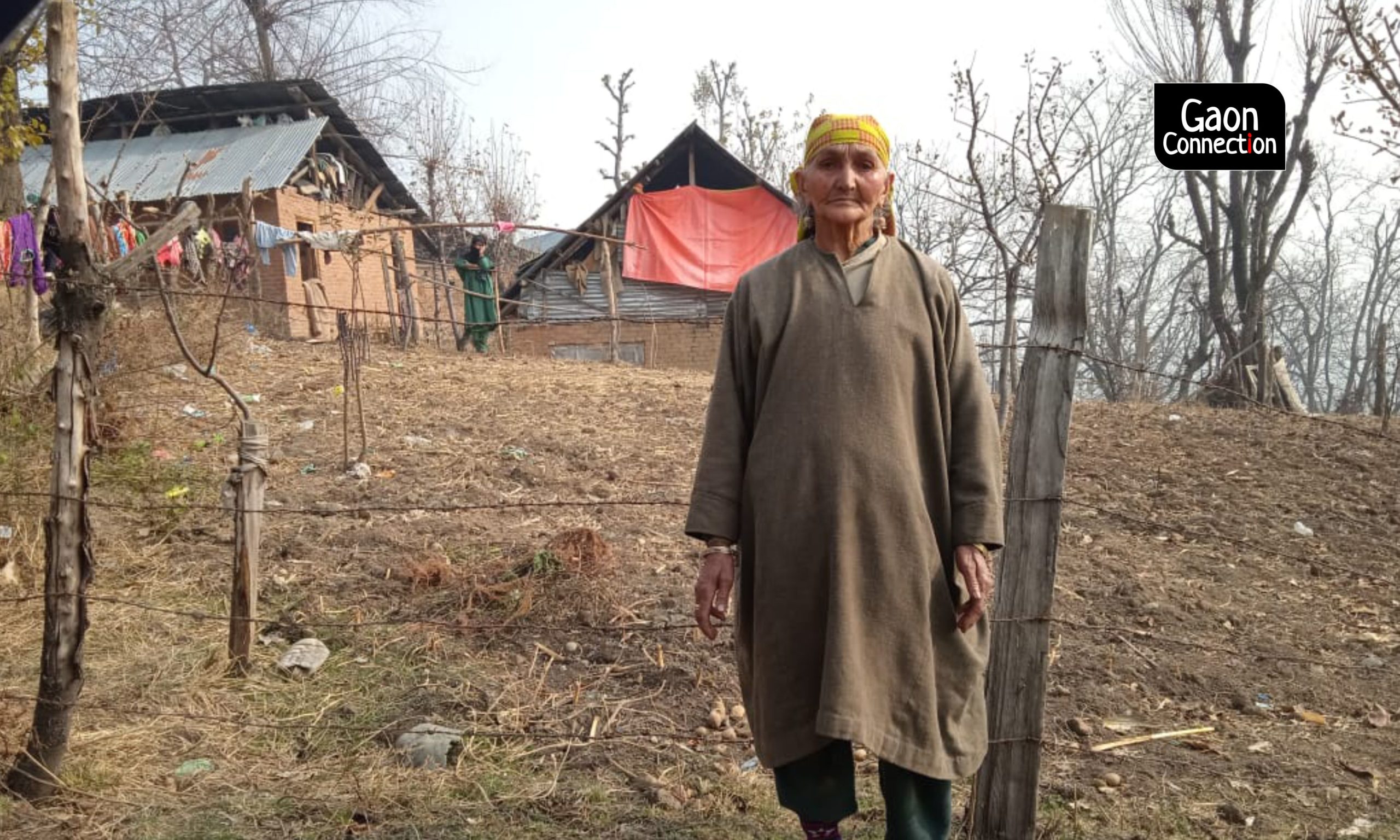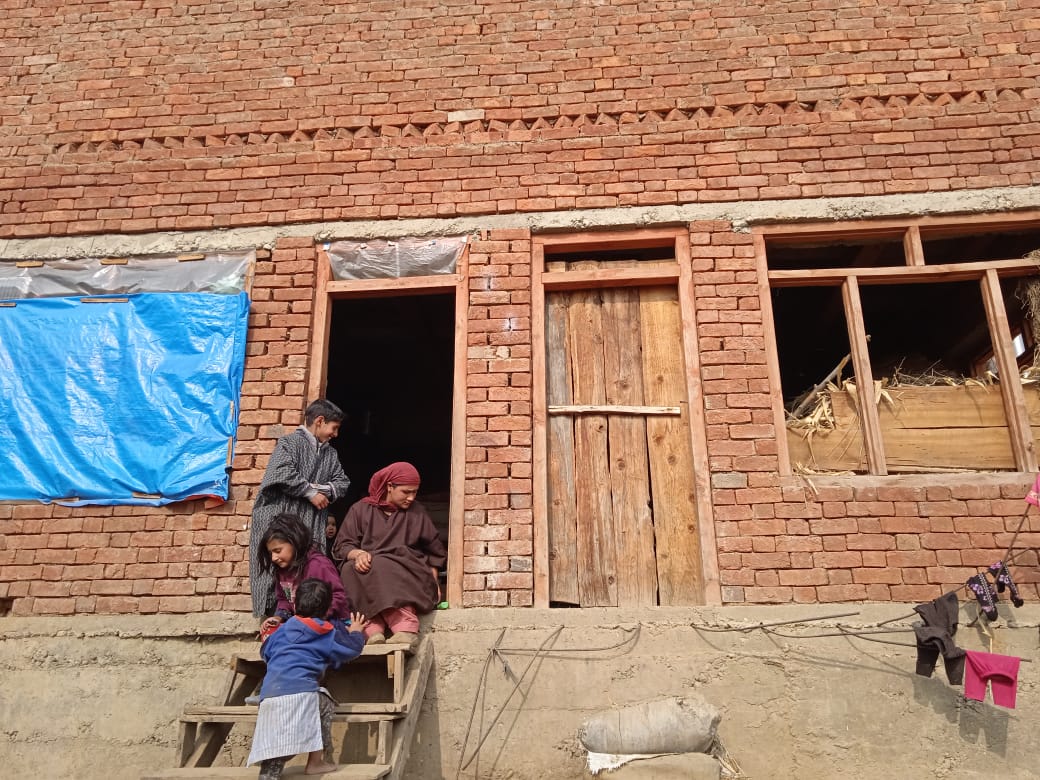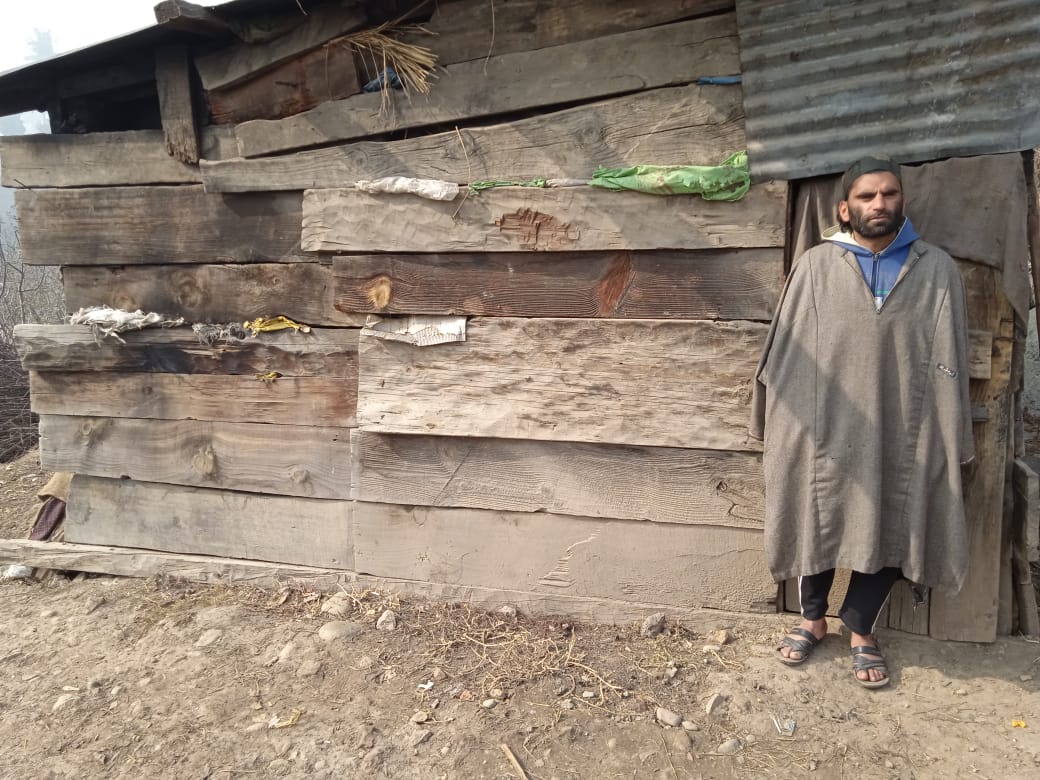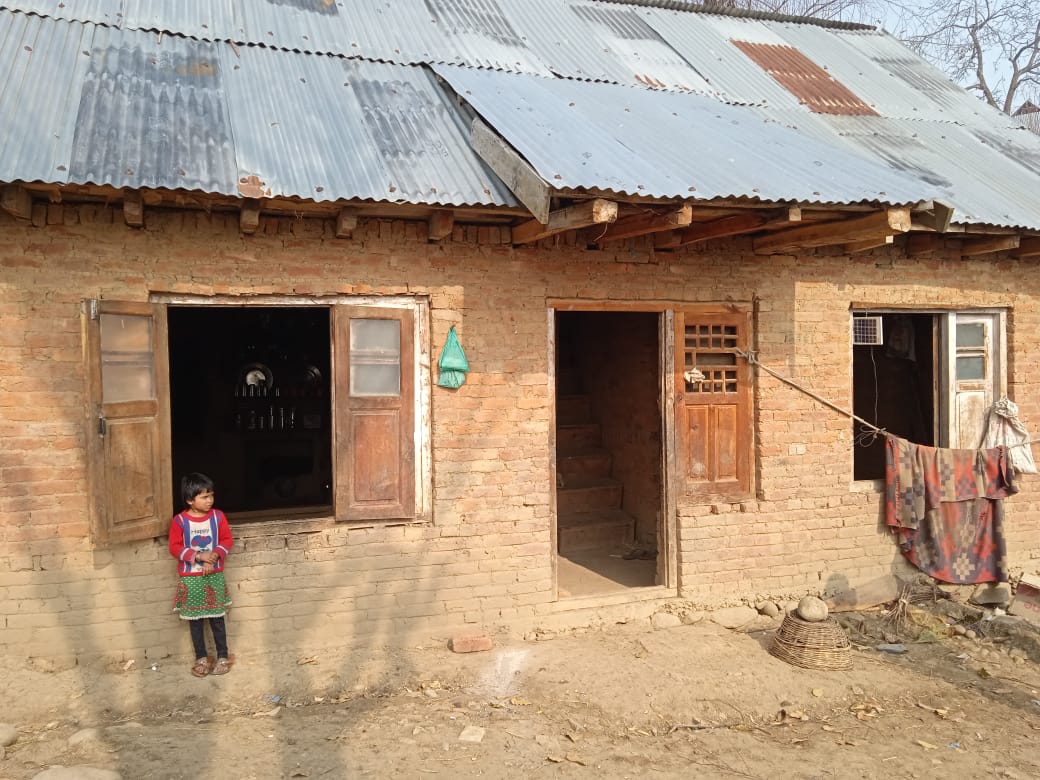The Axe-Effect: Terming villagers ‘encroachers’ on forest land, the J&K forest dept fells thousands of apple trees
Traditional forest dwelling communities in the twin districts of Pulwama and Budgam of J&K have been served eviction notices and thousands of mature apple trees chopped by the forest department. The Forest Rights Act, 2006, that grants rights to such communities over their forests, is yet to be implemented in the union territory.


Srinagar, Jammu and Kashmir
The families of Farooq Ahmad Hajam, 42, and his five neighbours, including Shakeel Hajam, Maqbool Hajam and Abdul Hameed Hajam, all traditional forest dwellers from Sekiloo village in Pulwama district bordering Budgam, have been cultivating small patches of land in the surrounding forests for generations. Last month, they were all served eviction notices by the Jammu and Kashmir (J&K) forest department.
Days later, in the third week of November, before they could even process the notices, axe-wielding employees of the department felled hundreds of decade-old apple trees raised by Farooq and his neighbours on over 30 kanals (1.51 hectares) of forest land in Kanidajan forest area of central Kashmir’s Budgam district, about 500 metres from Sekiloo. The trees had fruited this season too, and they harvested up to 10 boxes (costing between Rs 700 and Rs 1,000 each in the mandis) of fruit from every tree. The number of trees felled runs into thousands in Kanidajan in Budgam district and Sekiloo in Pulwama district.
“I had planted over a hundred apple trees on the land and each tree was almost a decade old. I pleaded that I would carefully uproot the trees to save them. But, the forest department felled them,” rued Farooq, who has been cultivating apples on five kanals (0.25 hectares) of forest land for the last two decades.
Since early November, the J&K administration has been evicting people, particularly nomads — the state has a nomad population of 1.5 million — and other traditional forest dwellers from forest land, allege villagers. Several videos of hutments being demolished surfaced in November 2020, triggering outrage. The nomads — mostly from the Gujjar and Bakarwal communities — live in temporary sheds or mud houses in forests and mountains. However, traditional forest dwellers live on private land, locally known as milkiyat land, but have been cultivating patches of forest lands for generations.

According to the forest department, the recent eviction drive was to clear illegal encroachments in the forest land. “The land was occupied by encroachers and not cultivated by traditional forest dwellers. We served them notices under section 79 of the Indian Forest Act, 1927,” Muhammad Ashraf Gutoo, district forest officer, Budgam, told Gaon Connection. This central Act automatically came into force in J&K after the abrogation of Article 370 in August last year and promulgation of Jammu and Kashmir Reorganisation Act in October 2019.
Gutoo said his department was all for safeguarding traditional forest dwellers. However, many residents in Kanidajan “owned homes in Srinagar”, he alleged. However, Farooq and his neighbours insist they are traditional forest dwellers and their ancestors have been cultivating the land for generations.
Former Jammu and Kashmir chief minister and Peoples Democratic Party (PDP) president Mehbooba Mufti was scheduled to visit the families who had been served eviction notices. But was allegedly stopped from visiting Budgam and detained at her house yesterday on December 8. Mufti posted a video on her Twitter handle, claiming that she had been detained by the police.
Anxious villagers
Located 50-km from Srinagar, there are 50 households in Sekiloo, and there are sad eyes and nervous faces all around. The village is inhabited by Hajams, traditional forest dwellers, who were once hair-dressers. Their main income now comes from cultivating forest land and taking up daily wage jobs. Most families in Sekiloo live in extreme deprivation. Most children do not study due to financial issues. During spring, the villagers face flash floods that wash away or weaken their half-built houses, where tarpaulin sheets cover window panes. The village also does not have a healthcare facility.

Mukhti Begum, in her late 70s, lives with her son Muhammad Shafi Hajam in a modest house in Sekiloo. She said the family has been dwelling on one kanal [.050 hectare] of forest land since her great grandfather’s time. “We cultivate maize and grow grass. The forest department’s action has made us anxious. We fear they will come after the rest of the villagers and leave us without a livelihood,” she told Gaon Connection.
Nazir Ahmad Hajam, who is 31 years old, lives in a single-room wooden hut on a hilly patch of proprietary (milkiyat) land in Sekiloo. His parents are no more, and he looks after his two mentally differently-abled brothers. He’s worried that the forest department has been issuing eviction notices to traditional forest dwellers and axing their trees. He’s not received the notice yet, but many of his neighbours in the village have. “What shall I do to feed my brothers if my land is taken away?” Nazir asked Gaon Connection. This is land that his father, grandfather and great-grandfather once cultivated, he said.

In Kanidajan, a village of over 150 households, the scene is no different than neighbouring Sekiloo. Muhammad Subhan Kumhar cultivated forest land for the last three decades to feed his family. Kumhar said his family has been cultivating the land for the past 100 years. “I remember my grandfather cultivated the same land,” Kumhar, who is in his early 50s, said.
He alleged the forest department had axed over 250 apple trees in the forest land that he cultivated. “Each tree was over a decade old. This has not just left me without income, but also washed away 10 years of hard work,” he told Gaon Connection.
In the same village, the forest department axed 150 apple trees of Abdul Razaq Wagay, who has been cultivating five kanals (0.25 hectare) of forest land for the last three decades. Another resident Showkat Ahmad Wagay said 300 apple trees were axed five days after he received an eviction notice.
Residents of Sekiloo and Kanidajan villages fear that over 200 families will be left without an income source. “We have given our lives to this forest. The felling of trees and the eviction process is criminal,” Ghulam Qadir, a resident of Kanidajan told Gaon Connection.
Meanwhile, the department on its official website has issued the list of alleged forestland encroachers in 32 forest divisions — 12 falling in Kashmir and 20 in Jammu region. As per officials, an estimated 2.96 lakh kanals of forestland (which is equivalent to 15,000 hectares) has been encroached in the union territory.
The highest area of forestland encroached upon is in Jammu region’s Ramban forest division (2,106 hectares), followed by Rajouri division (1,973.9 hectares), Poonch (1,472 hectares) and Shopian (1,026.77 hectares), which is in Kashmir division. Further, in Anantnag forest division, 6,583 encroachment cases involving 1,496 hectares of land have been reported.

Legal vacuum
Since the abrogation of Article 370 last August, J&K has been facing a sort of legal vacuum as far as traditional forest dwellers are concerned. It had its own Jammu & Kashmir Forest (Conservation) Act, which is no more applicable in the state. The two central acts — The Indian Forest Act, 1927, and The Scheduled Tribes and Other Traditional Forest Dwellers (Recognition of Forest Rights) Act, 2006 — are now applicable in the union territory. It is under the former that the forest department has recently issued eviction notices and axed apple trees.
However, the Forest Rights Act, 2006, which grants rights to traditional forest dwelling communities, is still not being implemented in J&K. At present, the administration of the union territory is conducting a survey of forest dwellers. The 2006 Act is expected to be implemented in J&K only by March 31, 2021.
Strangely, the local administration is yet to define who is a nomad or traditional forest dweller under the central law, which is now applicable in the union territory. “We had our own forest act that defined nomads, traditional forest dwellers and other people with rights on forest land. The Union Government should have defined that in a notification, but they are not doing that deliberately,” Altaf Khan, a senior advocate at the J&K High Court, told Gaon Connection.
When asked, an official of the administration who did not wish to be named refused to speak about why the notification defining a ‘forest dweller’ had not yet been issued.

Forest land in J&K
The recorded forest area in Jammu and Kashmir is 20,230 square kilometres which constitutes 19.95 per cent of the total geographical area of the union territory.
Before the extension of the Forest Rights Act, 2006 to J&K, the state forest policy, enacted under the erstwhile Dogra regime (1846-1947), was in place. The rights and concessions were settled in favour of the people. The settlement was carried out under the Kashmir forest notice in 1912 to demarcate forests in Kashmir and concession of forest produce to villagers as well as regulation of the same.
After the abrogation of Article 370 on August 5 last year, the region came under the central forest act. On November 18 this year, the Jammu and Kashmir administration said that it would implement the Forest Rights Act, 2006.
Experts told Gaon Connection that if nomads and traditional forest dwellers came under the Forest Rights Act, it would be extremely difficult for the state to evict them from their habitations. As per the 2006 Act, traditional forest dwellers can keep up to four hectares (80 kanals) of land for cultivation. The average land cultivated by the villagers in Kanidajan and Sekiloo villages is only four or five kanals.
Raja Muzaffar, a political activist and President J&K RTI Movement, told Gaon Connection that those recently served eviction notices “have been residing there for two or three centuries. Moreover, villagers were allocated land here under the ‘Grow More Food’ programme by Sheikh Muhammad Abdullah in the 1950s. Open forest land was divided among the locals to grow more food to suffice the needs of the locals. Now, after 72 years, the same land is being forcibly taken back”.
The Roshni Act
Recently, another act of J&K has been embroiled in a controversy. The Jammu and Kashmir State Land (Vesting of Ownership to the Occupants) Act, 2001 was passed by the then National Conference government led by Farooq Abdullah to give ownership to people in possession of state land, with a cut-off of 1990, and against a payment as determined by the government. Since the aim was to generate resources for hydroelectric power projects, it was called the Roshni Act.
In its 2014 report, the CAG (Comptroller and Auditor General of India) termed the scheme a Rs 25,000-crore scam. Four years later, in October 2018, the then governor Satya Pal Malik repealed the Roshni Act prospectively and a year later, in September 2019, he ordered a probe by the state anti-corruption bureau into all dealings under the Roshni Scheme. Meanwhile, in October this year, the J&K High Court declared the Roshni Act “illegal, unconstitutional and unsustainable” and held allotments under the Act as void ab initio.
Last week, on December 3, the J&K administration published a list of over 60,000 persons who have allegedly grabbed forestland in the union territory. It is feared that this may lead to eviction of forest dwelling communities too. However, the administration has now approached the high court seeking modifications in its order as many common people would suffer unintentionally.

